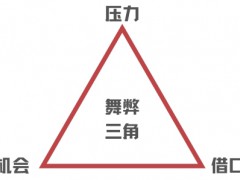据3月18日TradeArabia报道,沙特能源部长阿卜杜勒阿齐兹·本·萨勒曼王子表示,沙特计划将国内液态烃的消耗量减少100万桶/天。
在2019年夏季需求高峰期间,沙特用于工业和发电的石油日消耗量约为49.1万桶。美国能源信息署(US Energy Information Administration)曾估计,在2015年需求创纪录的夏季高峰期,这一数字接近100万桶/天。
沙特能源部长表示:“如果我们要保持油气生产商的长期稳定地位,我们就必须有足够的创新和合作,以确保这些油气资源将被货币化,并以更好的方式加以利用。我们正在启动一个可持续发展项目,试图找到以不同方式使用碳氢化合物的方法,特别是在材料方面,并且不会对环境产生影响。”
减少国内需求也可能帮助沙特阿拉伯国家石油公司将其长期闲置产能从历史上的150万桶/天提高到200万桶/天。据调查,由于沙特与欧佩克+达成了自主减产协议。欧佩克+在2月份将产量限制在813万桶/天,出口量低于600万桶/天,这表示沙特1200万桶/天的产能中有更多的原油可供使用。
阿卜杜拉国王石油研究与研究中心(King Abdullah Petroleum Studies and research Centre) 2018年发表的一篇研究论文预测,沙特国内汽油和电力价格的上涨可以有效地将出口能力提高逾7.5万桶/天,同时每年减少9700万吨碳排放。
他指出:“我们今年将推出的液体置换项目将减少我们在所有公用事业上的石油和石油产品的消耗。”
值得一提的还有氢能的驱动。
沙特和其他国家通过各种改革,扩大燃气发电厂,在减少电力部门的燃料燃烧方面取得了进展。根据国际海事组织(IMO) 2020协议,沙特的电力部门可能也受益于该地区更多的重油供应。
根据国际货币基金组织(IMF)的数据,依赖石油的沙特需要每桶约80美元的石油价格来平衡其预算。与此同时,据阿卜杜勒阿齐兹王子表示,沙特正在能源领域推进减缓气候变化的举措。
其中包括一个价值50亿美元的绿色制氢设施,由可再生能源供电,目标是每天提供650吨无碳氢供出口。该设施位于NEOM智能城市,该项目于7月宣布。沙特还宣布,计划到2030年,可再生能源和天然气的发电量分别占该国总发电量的50%。
他补充道:“我们现在正处于助推谈判成果落地的阶段,我们愿意执行我们在巴黎协议中达成的协议。但同时我们也必须考虑国情。如果想要兼收并蓄,你就必须考虑到每一个参与的国家。”
王佳晶 摘译自 TradeArabia
原文如下:
Saudi Arabia targets 1m b/d cut in domestic oil use
Saudi Arabia plans to reduce domestic consumption of liquid hydrocarbons by one million barrels per day (b/d) for use "in a better way", the kingdom's Energy Minister Prince Abdulaziz bin Salman said.
Before the Covid-19 pandemic, the kingdom was consuming around 491,000 b/d of oil for industrial use and power generation during the height of its summer demand in 2019. The US Energy Information Administration had estimated the figure to be closer to 1 million b/d in 2015 at the peak of summer during a record year for demand.
"If we are to maintain our position as a long-term carbon producer, we have to be innovative enough and collaborative enough to ensure these hydrocarbon resources will be monetized and used in a better way," said the Saudi minister during the Berlin Energy Transition Dialogue, broadcast online March 16. "We are launching a sustainability program to try to find ways to use hydrocarbons in different ways, especially in terms of materials, which will not be impacting or affecting the environment in any way."
Reducing domestic demand could also help Saudi Aramco increase its long-term spare capacity from levels of around 1.5 million b/d to 2 million b/d historically. The kingdom has more crude available from its 12 million b/d production capacity, due to its self-enforced cuts agreed with OPEC+, which have limited production to 8.13 million b/d in February, according to the latest S&P Global Platts survey, with exports below 6 million b/d.
A research paper published in 2018 by the King Abdullah Petroleum Studies and Research Centre forecast that increases in domestic gasoline and electricity prices in the kingdom could effectively boost export capacity by over 75,000 b/d, while cutting carbon emissions by 97 million tons annually.
"The liquid displacement program that we will be introducing this year will take care of reducing our petroleum and petroleum product consumption from all utilities," said Prince Abdulaziz.
Hydrogen drive
Saudi and other states have made headway reducing fuel burn in the power sector through various reforms and the expansion of gas-fired generation plants for electricity and desalination. The kingdom's power sector may also have benefited from the availability of more heavy fuel oil in the region following the introduction of tougher regulations on shipping fuel under the IMO 2020 agreement.
Hydrocarbon-dependent Saudi Arabia needs a breakeven price of about $80/b to balance its budget, according to the IMF.
Meanwhile, Saudi is pushing ahead with climate change mitigation initiatives in the energy sector, according to Prince Abdulaziz said.
These include a $5 billion green hydrogen production facility powered by renewable energy targeted to provide 650 tons of carbon-free hydrogen daily for export, situated at its NEOM smart city, which was announced in July. Saudi Arabia has also announced plans to have 50% of its power generated by renewables and 50% generated from natural gas by 2030.
"We are now in a phase of delivering what we have negotiated," he said. "We are willingly executing what we have agreed to in the Paris agreement. We have to be mindful of national circumstances. If want to be inclusive you have to be mindful of each nation you want to participate with you."
免责声明:本网转载自其它媒体的文章,目的在于弘扬石化精神,传递更多石化信息,并不代表本网赞同其观点和对其真实性负责,在此我们谨向原作者和原媒体致以敬意。如果您认为本站文章侵犯了您的版权,请与我们联系,我们将第一时间删除。







